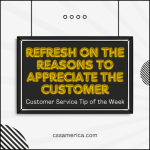 Serving others is tough. Whether it’s dealing with an irate customer, having to field the same question from the 100th different customer this month, or keeping 10 plates spinning while still smiling in front of the client, it’s hard.
Serving others is tough. Whether it’s dealing with an irate customer, having to field the same question from the 100th different customer this month, or keeping 10 plates spinning while still smiling in front of the client, it’s hard.
You want to do a great job, and you’re constantly put into a position to make decisions. Those decisions lead us down Path A or Path B. Those decisions make our life easier or harder. Those decisions help the bottom line or hurt the bottom line. And those decisions make the customer happy or upset.
What makes those decisions so hard is that one decision might help the bottom line but make the customer upset. Another decision might make your life harder but make the customer happy.
I’m not in your shoes, so I cannot tell you what decision to make. Each one of you makes hundreds of decisions each week at work and in your personal life. Neither you nor I can anticipate every situation that you’ll be presented with or every question you’ll have to consider.
But what will make your work-related decisions easier is to at least have a starting point. Even before you’re presented with a situation, know and document the principles that will guide your decision-making.
Here are some key principles to consider in your decision-making processes if your job is customer service related: Be ethical. Do what’s best for the customer now. Do what helps the organization long-term.
These might seem short and simple, but it’s amazing how the appropriate decision becomes much clearer if each alternative is tested against these principles.
What principles guide your decision-making at work? Know them, write them down, and remember them.
The next time you make a decision, let your principles be your guide.
Signup for FREE Tips! Contact Us More Resources for You Visit Our Home Page























